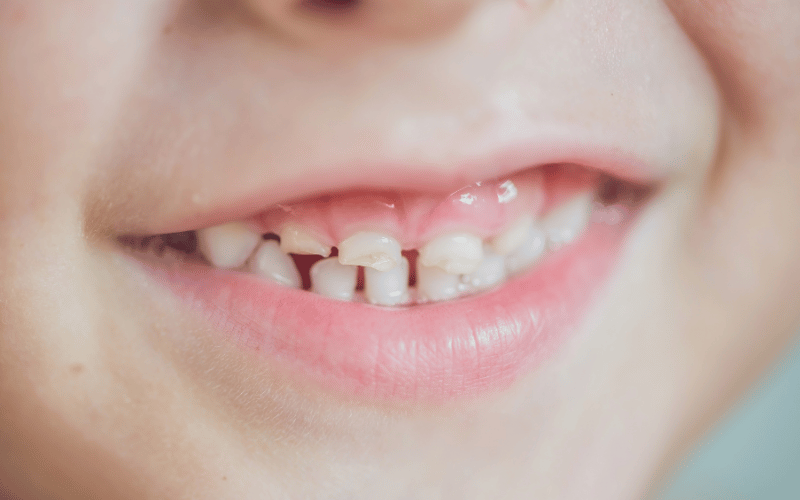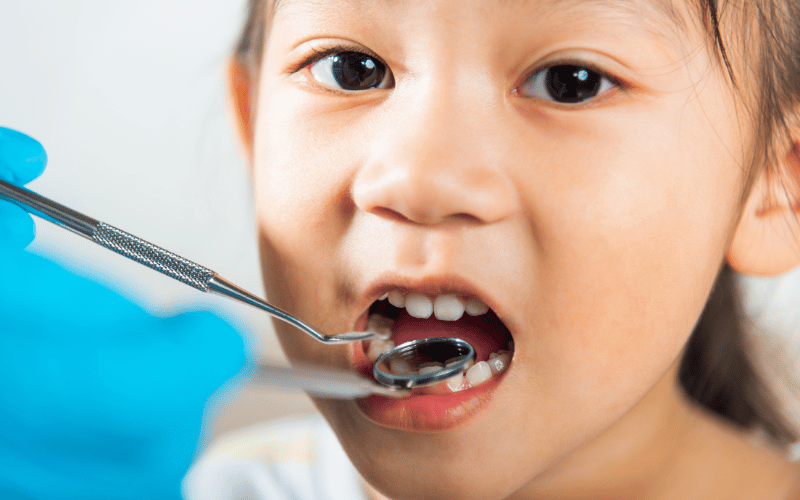Introduction: Unmasking Early Childhood Caries
The well-being of a child’s smile is a beautiful, yet fragile treasure. Unbeknownst to many, this treasure is under threat from a pervasive dental nemesis: Early Childhood Caries (ECC), formerly known as nursing bottle caries. ECC stands as a significant challenge to pediatric dental health, laying foundations for concerns that could extend far beyond the formative years. Through understanding, vigilance, and timely intervention, however, this tide can be turned.

Embarking on a journey through the dental landscapes of the young, we find ECC is not merely an isolated dental anomaly—it’s an alarm bell for a child’s overall health. It starts innocently enough, often with a bottle or frequent sugary treats, yet swiftly escalates into a condition that can jeopardize the development of strong, healthy permanent teeth. Unpacking the layers of ECC reveals a complex interplay between diet, dental hygiene, and broader health practices.
Parents and caregivers hold the front line in this ongoing battle. Awareness is their strongest ally, and knowledge their most effective weapon. Being adept at spotting the early signs of ECC, which can range from subtle white spots to severe decay, can spare a child from the pain and complications that follow. These symptoms serve as critical waypoints in the narrative of a child’s oral health journey.
The story of ECC is not just about identifying the villains of decay but also championing the heroes of prevention. With strategies ranging from proper bottle-feeding practices to the introduction of fluoride, parents can foster an environment where young teeth can thrive. It’s about writing a narrative that champions resilience and smiles that are both healthy and joyful.
In this tale of tiny teeth, every parent is a protagonist. The plot pivots on informed choices and proactive dental care, with each chapter building towards a future free from the grasp of ECC. With this understanding, caregivers are empowered to pen a childhood script where every grin is bright, and every tooth is treasured. Armed with the right information and tools, the specter of early childhood caries can be banished, leaving room for nothing but laughter and a lifetime of healthy smiles.
1. The Onset and Progression of ECC: Early Indicators to Watch For

The journey of ECC begins silently, with changes in the mouth that are easy to overlook. White or brown spots on a child’s teeth might seem benign, but they’re the first red flags of enamel breakdown. These spots often appear near the gum line of the front teeth, where they can go unnoticed without close inspection. Vigilance is key; parents should make a habit of checking their child’s teeth regularly, just as they would enforce handwashing before dinner.
As the enamel of a child’s tooth is not fully mature, it offers a weaker defense against the onslaught of acids produced by bacteria in the mouth. This is particularly crucial in the case of ECC, where the enamel is under constant attack from frequent exposure to sugary liquids. The enamel’s vulnerability underscores the importance of catching ECC in its earliest stage when preventive measures can be most effective.
The term ‘bottle caries‘ comes from the condition’s association with improper bottle-feeding practices. Night-time bottle-feeding with milk or juice, or using a bottle as a pacifier, can bathe the child’s teeth in sugars through the night, providing a feast for caries-causing bacteria. Educating parents on the dangers of prolonged bottle use, especially with sugary liquids, is a cornerstone of ECC prevention.
When ECC progresses beyond the initial spots, children may experience discomfort or pain, which they may not always communicate effectively. This can lead to changes in eating habits, irritability, and even sleep disturbances. Parents should be alert to these subtle shifts in behavior, as they can indicate the caries has evolved from a silent threat to an active concern impacting the child’s daily life.
Intervention in the ECC progression at an early stage can dramatically alter the oral health trajectory of a child. A proactive approach—recognizing early signs, understanding the risk factors, and taking immediate action—can prevent the transformation of ECC from a manageable condition to one that requires extensive and potentially traumatic dental interventions. (1)